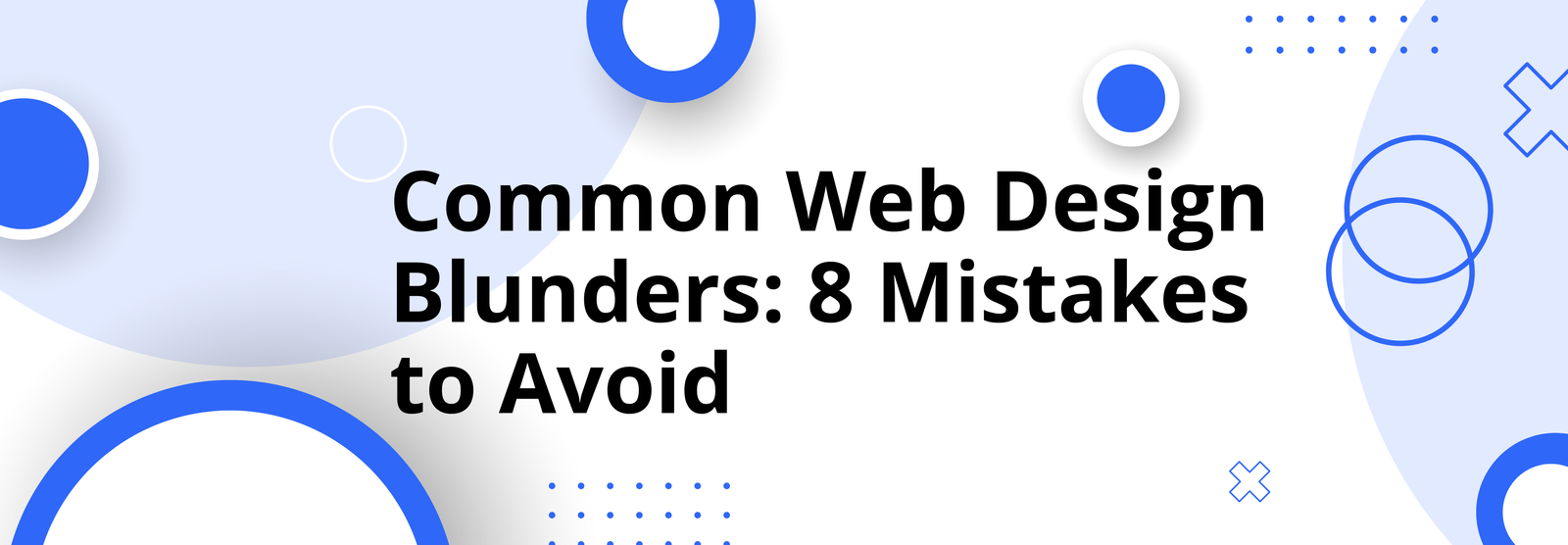
Creating an effective website is essential for engaging your audience and achieving your business goals. However, even the most well-intentioned web designers can make mistakes that detract from the user experience and overall effectiveness of a site. Here are eight common web design blunders you should avoid to ensure your website is both user-friendly and impactful.
The Problem:
A cluttered layout overwhelms visitors with too much information and too many elements competing for attention. This can make it difficult for users to find what they are looking for and can cause them to leave your site quickly.
The Solution:
Adopt a minimalist approach by using ample white space, organizing content logically, and focusing on the most important elements. Prioritize readability and simplicity to guide users naturally through your site.
The Problem:
Complicated or unclear navigation can frustrate users and make it difficult for them to find information. Hidden menus, non-intuitive labels, and too many navigation options are common issues.
The Solution:
Design a clear and straightforward navigation system. Use descriptive labels, ensure your menu is easily accessible, and limit the number of options to avoid overwhelming users. Provide a search function to assist visitors in finding particular material more quickly.
The Problem:
Slow-loading pages can drive visitors away before they even see your content. High bounce rates and lower search engine rankings often result from sluggish performance.
The Solution:
Optimize your website's performance by compressing images, minifying code, leveraging browser caching, and using a reliable hosting service. Regularly test your site's speed using tools like Google PageSpeed Insights and make necessary improvements.
The Problem:
A website that doesn't adapt to different screen sizes and devices alienates mobile users. With a significant portion of web traffic coming from mobile devices, a non-responsive design can severely limit your audience.
The Solution:
Implement a responsive design that adjusts seamlessly to various screen sizes and devices. Use flexible grids, responsive images, and media queries to ensure your site looks and functions well on all devices.
The Problem:
Inconsistent branding confuses users and undermines your brand's credibility. Disparities in colors, fonts, imagery, and tone can create a disjointed user experience.
The Solution:
Develop a comprehensive style guide that outlines your brand's colors, typography, imagery, and voice. Ensure all elements of your website adhere to these guidelines to create a cohesive and recognizable brand identity.
The Problem:
Difficult-to-read text can drive users away. Issues such as small fonts, low contrast between text and background, and long paragraphs hinder readability.
The Solution:
Pick readable typefaces and make sure the font size is right. Make sure the text and background colors have enough contrast. Break up long paragraphs into shorter, more digestible chunks and use headings and bullet points to improve readability.
The Problem:
Failing to consider accessibility can exclude users with disabilities and impairments, leading to a loss of potential customers and possible legal repercussions.
The Solution:
Follow web accessibility guidelines (such as WCAG) to make your site accessible to all users. Use alt text for images, ensure your site is navigable via keyboard, and provide transcripts for audio and video content. Regularly test your site with accessibility tools to identify and address any issues.
The Problem:
A website without clear and compelling CTAs can fail to guide users towards desired actions, such as making a purchase, signing up for a newsletter, or contacting you.
The Solution:
Design prominent and persuasive CTAs that stand out on the page. Use action-oriented language and place CTAs strategically throughout your site to guide users toward conversion points. Test different CTA designs and placements to find the most effective combination.
By avoiding these common web design blunders, you can create a more engaging, accessible, and user-friendly website that effectively serves your audience and achieves your business objectives. Regularly review and update your design practices to stay current with evolving web standards and user expectations.